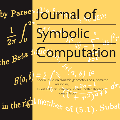In the realm of Computational Fluid Dynamics (CFD), the demand for memory and computation resources is extreme, necessitating the use of leadership-scale computing platforms for practical domain sizes. This intensive requirement renders traditional checkpointing methods ineffective due to the significant slowdown in simulations while saving state data to disk. As we progress towards exascale and GPU-driven High-Performance Computing (HPC) and confront larger problem sizes, the choice becomes increasingly stark: to compromise data fidelity or to reduce resolution. To navigate this challenge, this study advocates for the use of in situ analysis and visualization techniques. These allow more frequent data "snapshots" to be taken directly from memory, thus avoiding the need for disruptive checkpointing. We detail our approach of instrumenting NekRS, a GPU-focused thermal-fluid simulation code employing the spectral element method (SEM), and describe varied in situ and in transit strategies for data rendering. Additionally, we provide concrete scientific use-cases and report on runs performed on Polaris, Argonne Leadership Computing Facility's (ALCF) 44 Petaflop supercomputer and J\"ulich Wizard for European Leadership Science (JUWELS) Booster, J\"ulich Supercomputing Centre's (JSC) 71 Petaflop High Performance Computing (HPC) system, offering practical insight into the implications of our methodology.
翻译:暂无翻译



